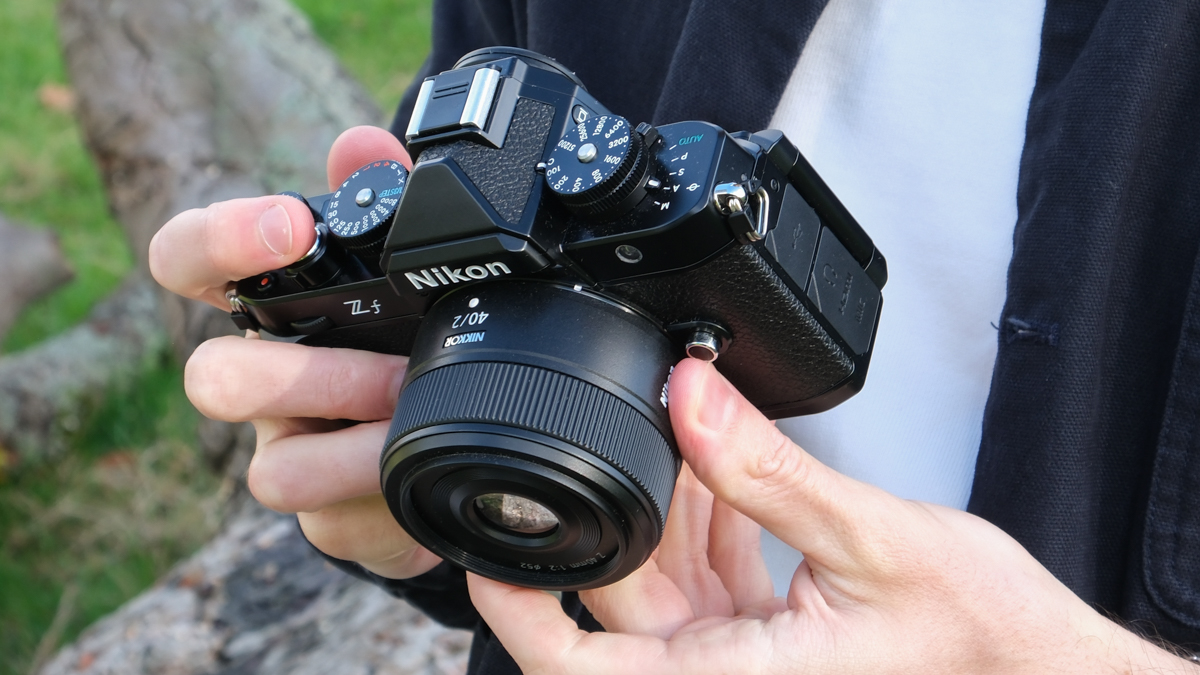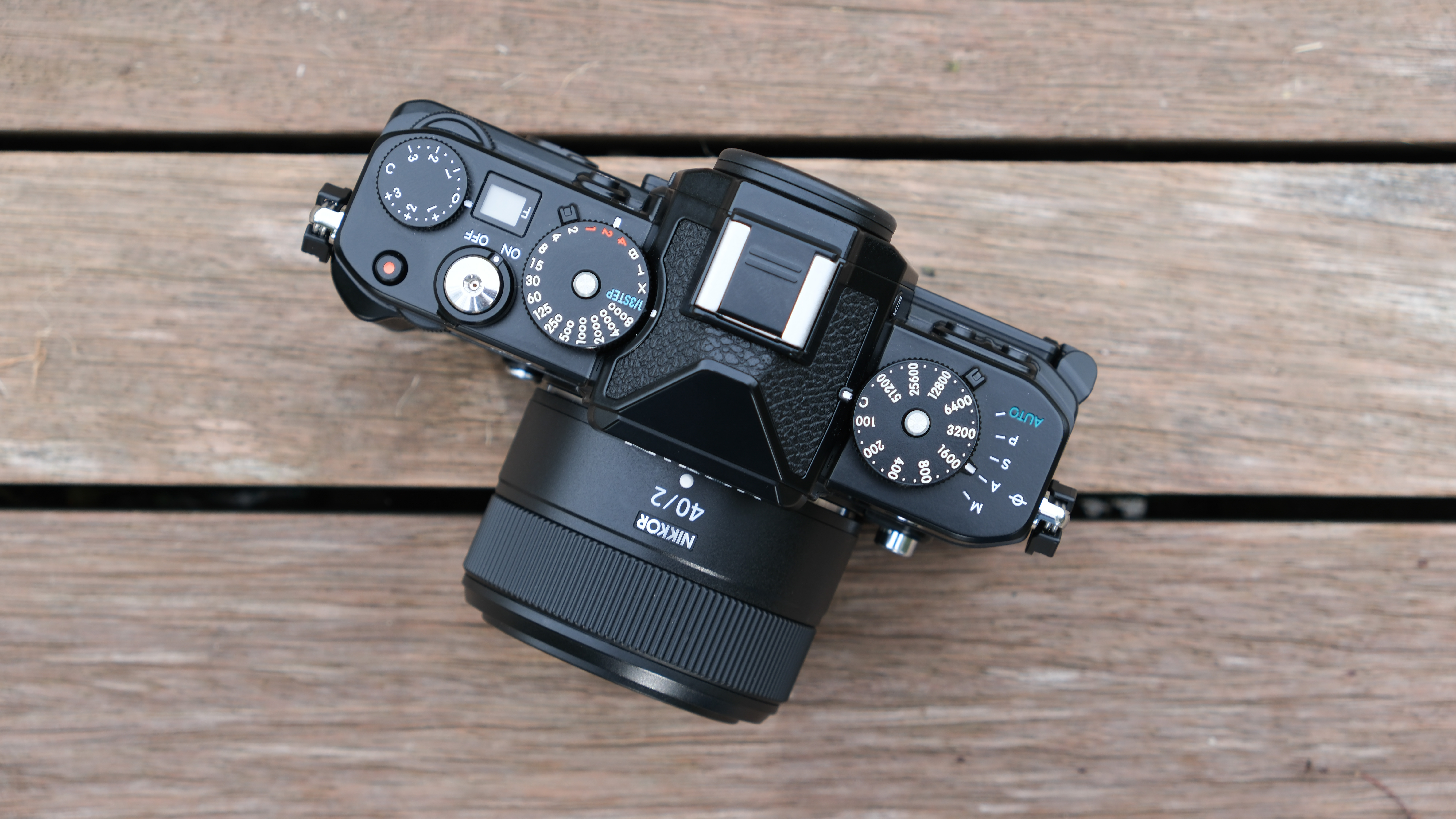Nikon dumped aperture rings years ago. So where does that leave the Zf?
The Nikon Zf is a beautiful retro-themed full frame camera with old-school camera controls. Well, two out of three

Way back in the year 2000 Nikon made a momentous decision. It decided that DSLR lenses no longer needed aperture rings. Advances in electronic lens coupling mean that the lens aperture could instead be controlled by the camera body and that was the best way to do it, and that in turn would make DSLR lenses cheaper, simpler and lighter.
It must have seemed a good idea at the time.
But where does that leave the Nikon Zf? Nikon has figured correctly that photographers today love the retro camera look and traditional external exposure controls and produced the rather beautiful and affordable Nikon Zf in response.
Actually, it’s not Nikon’s first retro model. 2013 saw the launch of the full frame Nikon Df DSLR, and then in 2021 we got the somewhat plasticky but still rather nice APS-C Nikon Z fc. In their time, both have been amongst the best Nikon cameras that you can buy.
But it’s the Nikon Zf that’s really caught everyone’s eye, with its lovely design, superior build quality and up to date 24MP full frame sensor. It’s not that expensive, either, all things considered.

So where’s the aperture ring?
The problem for the Zf, and for Nikon, is that it can only get two-thirds of the way to the kind of camera it’s meant to emulate, and it’s because of that fateful lens decision it made all those years ago.
It’s all about the exposure triangle – shutter speed, lens aperture and ISO setting. The best Fujifilm cameras got this right with its X-T and X-Pro series cameras, with shutter speed and ISO dials on the top and aperture rings on the lenses. You could argue that this is what made Fujifilm’s reputation and its subsequent success.
Get the Digital Camera World Newsletter
The best camera deals, reviews, product advice, and unmissable photography news, direct to your inbox!
But while the Nikon Zf has the shutter speed and ISO dials, Nikon no longer makes lenses with aperture rings. It hasn’t for years. Not even the best Nikon Z lenses have aperture rings.
Instead, you can control the lens aperture ONLY from the camera body via the command dials and an appropriate exposure mode (M or A). Then, the aperture is displayed in a rather small LCD panel on the top plate. It’s not the same.

Will this harm the Nikon Zf?
Probably not that much as it’s still a beautiful camera, but that decision Nikon made over two decades ago in the name of technological advancement and efficiency has come back to haunt it. Of course, many photographers do indeed want those things and aren’t really interested in the retro vibe.
Many more, however, have come to realize that photography is also about the experience of using cameras and find that this does actually have an impact on their personal creativity and inspiration. It shouldn’t, you might argue, but it does.
Will Nikon start making Z lenses with aperture rings? Sony has with its own full frame E-mount optics and it’s become a key selling point even for non-retro shooters.
Or is it the case that the camera electronics cannot easily be reconfigured for lens-based aperture control, or that Nikon simply won’t want to admit it made a wrong decision?
If things stay as they are, though, in my opinion the Nikon Zf will only ever offer two-thirds of the retro experience it was designed to recreate.

Rod is an independent photography journalist and editor, and a long-standing Digital Camera World contributor, having previously worked as DCW's Group Reviews editor. Before that he has been technique editor on N-Photo, Head of Testing for the photography division and Camera Channel editor on TechRadar, as well as contributing to many other publications. He has been writing about photography technique, photo editing and digital cameras since they first appeared, and before that began his career writing about film photography. He has used and reviewed practically every interchangeable lens camera launched in the past 20 years, from entry-level DSLRs to medium format cameras, together with lenses, tripods, gimbals, light meters, camera bags and more. Rod has his own camera gear blog at fotovolo.com but also writes about photo-editing applications and techniques at lifeafterphotoshop.com
